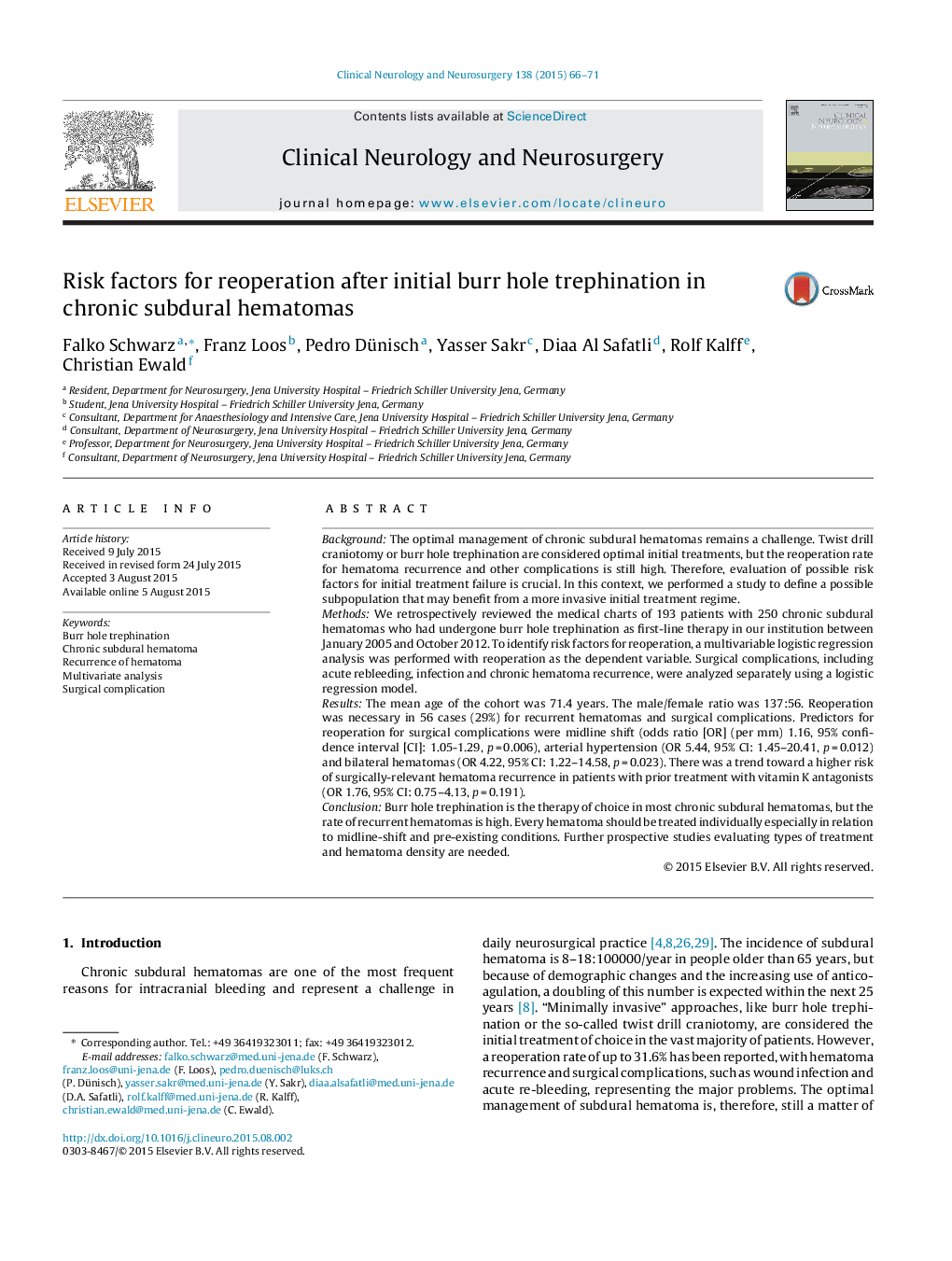| کد مقاله | کد نشریه | سال انتشار | مقاله انگلیسی | نسخه تمام متن |
|---|---|---|---|---|
| 3039725 | 1579684 | 2015 | 6 صفحه PDF | دانلود رایگان |
• We examine 193 patients with 250 chronic subdural hematomas.
• Univariate and multivariate analysis were done to detect risk factors for reoperations.
• Risk factors were a midline shift, arterial hypertension and bilateral hematomas.
• A trend towards a higher risk was a prior treatment with vitamin K antagonists.
• Burr hole trephination is the therapy of choice in most chronic subdural hematomas.
BackgroundThe optimal management of chronic subdural hematomas remains a challenge. Twist drill craniotomy or burr hole trephination are considered optimal initial treatments, but the reoperation rate for hematoma recurrence and other complications is still high. Therefore, evaluation of possible risk factors for initial treatment failure is crucial. In this context, we performed a study to define a possible subpopulation that may benefit from a more invasive initial treatment regime.MethodsWe retrospectively reviewed the medical charts of 193 patients with 250 chronic subdural hematomas who had undergone burr hole trephination as first-line therapy in our institution between January 2005 and October 2012. To identify risk factors for reoperation, a multivariable logistic regression analysis was performed with reoperation as the dependent variable. Surgical complications, including acute rebleeding, infection and chronic hematoma recurrence, were analyzed separately using a logistic regression model.ResultsThe mean age of the cohort was 71.4 years. The male/female ratio was 137:56. Reoperation was necessary in 56 cases (29%) for recurrent hematomas and surgical complications. Predictors for reoperation for surgical complications were midline shift (odds ratio [OR] (per mm) 1.16, 95% confidence interval [CI]: 1.05-1.29, p = 0.006), arterial hypertension (OR 5.44, 95% CI: 1.45–20.41, p = 0.012) and bilateral hematomas (OR 4.22, 95% CI: 1.22–14.58, p = 0.023). There was a trend toward a higher risk of surgically-relevant hematoma recurrence in patients with prior treatment with vitamin K antagonists (OR 1.76, 95% CI: 0.75–4.13, p = 0.191).ConclusionBurr hole trephination is the therapy of choice in most chronic subdural hematomas, but the rate of recurrent hematomas is high. Every hematoma should be treated individually especially in relation to midline-shift and pre-existing conditions. Further prospective studies evaluating types of treatment and hematoma density are needed.
Journal: Clinical Neurology and Neurosurgery - Volume 138, November 2015, Pages 66–71
